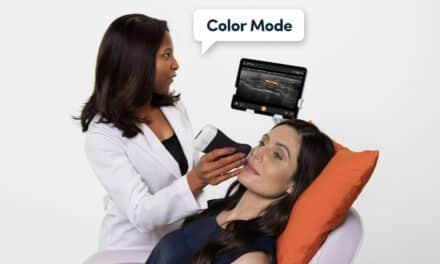 |
Let’s get this out of the way: The economy is agonal, and many businesses—including aesthetic practices—are not going to weather the current crisis.
Unfortunately, this economic crisis is global in nature. From Wall Street to Main Street, London to Dubai, Singapore to Hong Kong, we all feel it. Those of us who have heard the stories from frugal elder relatives who lived through the 1930s may be shocked to hear themselves referencing these same stories as they advise their kids and staff to curb indulgences. Perhaps a look back is not such a bad idea.
Who did well in the Great Depression, and why should you care?
The businesses that prospered in the Depression were known as “sin industries,” referring to alcohol, candy, and cigarettes.
Prohibition was repealed in 1933 after both crime and consumption of alcohol soared. We learned that prohibition of two mutually beneficial exchanges is doomed to failure. Also, chocolate sales were up. Hershey did well as it introduced Mr. Goodbar, Hershey syrup, and chocolate chips. Cigarette sales also spiked.
Interestingly, in addition to the sin industries, another realm that did well was the cosmetics industry. Both L’Oreal and Revlon expanded. Estée Lauder is reported to have remarked—and I am paraphrasing—”After a woman feeds her kids and husband, she would rather buy lipstick than eat …”
Is this statement still true today? What do all the sin industries have in common, and why do we care?
The sin industries allow us to temporarily escape from reality, satisfy a guilty pleasure, and—this is key—receive immediate gratification. So if the key is a quick fix, right behind that is “inexpensive.” Affordable pricing is essential to achieving maximum gratification and repeat business.
How many can relate to the feeling after buying an item that makes you feel great—maybe a new article of clothing, a new watch, or a new car? But how much better is it when that new item is affordable and immediate?
If it is expensive or there is a long lag time until the benefit is achieved, there is a risk for buyer’s remorse and even worse negative ill will toward the place from which it was purchased.
When finances are limited, consumers are less likely to purchase any luxury that doesn’t provide an immediate benefit—especially if the price has to be justified.
Our retail cousins who prospered during the Great Depression sold quick-returning pleasures at an affordable price. This is the takeaway point from evaluating the successful business of the Great Depression.
However, in the world of selling retail, the bottom line is frequently determined by the dollar and a business’ success is measured in financial statements.
WHERE YOUR PRACTICE FITS
Although a little retail flair appears to be a necessary component to a successful aesthetic practice, medicine is not a retail business.
Aesthetic medicine also is not a general medical business in that we are selling an expensive pay-for-service luxury, not a necessity for health. However, aesthetic medicine is still first and foremost the practice of medicine, and, as physicians, we have taken a very prominent oath.
Beyond any other profession or business, we have an enormous fiduciary responsibility to always do what is in the best interest of someone other then ourselves. No other profession is granted such a responsibility or holds each member to such a high standard. This truism guides us and guides our treatments, and success is measured in our patients’ well-being, not the dollar.
Therein lies a dilemma. The core principles in medicine and business are at times contradictory. Aesthetic medicine is unique—it is in-between a general medical practice and retail. We really don’t fall into any one category. If we apply the business principles used in a general medical practice, we may compromise on the customer service flair essential to selling a luxury item. Yet, if we stress retail principles—such as up selling and increasing profits per customer (or patient) visits—we risk violating basic fiduciary tenets inherent to medicine.
Therefore, what business models can we look at that prioritizes the consumer’s well-being above that of financial return, yet allows us enough room to stay financial solvent in an economic environment with less consumer spending?
The field of aesthetic medicine really is a new type of model, between retail service and general medicine. I call it Retailicine.
RETAIL MEETS MEDICINE
In retailicine, we have a responsibility to treat the patient first using the most responsible and appropriate treatments. We also have to frame it with the luxuries of retail in order to keep our patients happy and stay profitable.
How do we practice retailicine in a down economy and still thrive?
Certainly, there are the fortunate few who are recognized as the best at what they do and are able to maintain a busy schedule regardless of the economic conditions.
For the majority of physicians, though, seeing a contraction of their practices now signals that it is time to act fast to ensure their practice thrives.
The sin industries prospered in a down economy. Can our services parallel yet stay within the moral boundaries of our granted profession? Yes, today they can.
We have at our disposal products and services such as neurotoxins, fillers, facials, and laser treatments that provide quick results and a relatively immediate improvement in mood.
These products and service have, for the most part, succeeded, and they are valid in the marketplace and fall within our fiduciary core to provide responsible treatments.
For physicians who are more surgically focused, the consumer demands a quicker result. No longer is a 2- to 6-week postoperative recovery period well-tolerated. Our customers still expect great results but with the most minimal sacrifice from busy schedules. And even though they will often prefer a provider who can meet such a demand, price matters now more then ever.
It is no surprise that the Wal-Marts and Aldi superstores of the world are expanding while many high-end luxury stores are faltering. If a consumer has limited funds and wants a glass of wine, he may be more likely to choose “two-buck chuck” (Charles Shaw) over the expensive Silver Oak. If the product is a commodity, then the store offering a lower price is likely to win out unless a consumer is willing to pay more for convenience or experience.
Aesthetic medicine, though, is not a commodity. Discounting your hard-earned skill and well-respected services is probably not the answer for long-term prosperity. The irreversible knee-jerk response of lowering your prices to become instantly more competitive risks turning you and your practice’s service into a commodity that can be attained at a local CVS pharmacy.
Of course, all strategies are predicated on the product being good, and in aesthetic medicine that means the physician.
If the physician is not good, then regardless of strategies and tactics the practice is doomed. However, I assume the physician is a qualified aesthetic business owner who wants a higher-end clientele. These people will have to bring added value to their product in order to charge a greater price. Usually, this means the customer would be willing to pay the price for more convenience or a better experience. Starbucks follows this same principle. By offering a better experience and more locations (convenience), it is able to charge twice the price as Dunkin Donuts for a cup of coffee.
An aesthetic physician who wants to charge a higher price for services has to provide superior customer service or more convenient hours, or other perks and enhancements that would validate the higher price.
On the other end of the spectrum, practices such as medical spas frequently work on a high-volume, low-price model. Currently, many medspas are failing. You would think that the affordable pricing and convenience of medspas fulfill the criteria of a business that would do well in a down economy.
Price by itself is only one component. And this is one area where the high-volume discounted retail business model fails when combined with aesthetic medicine. Cosmetic medical procedures are still medical procedures, and a person exposes vulnerability when undergoing the procedure.
Patients want some assurance (or at least the perception of it) and are willing to spend more money at a physician’s office for that perception of quality.
Additionally, volume-oriented medspas may struggle with maintaining excellent customer service because customer service is often considered to be an expensive, nonrevenue-generating investment. This couldn’t be further from the truth in an aesthetic practice, which in the current economic situation demands that you go above and beyond with customer service. Doing so will be critical to maintaining and growing market share.
Increasing customer service can be done inexpensively. For high-volume businesses, efficiency is critical. In order for the high-volume/low-price strategies to work, emphasize customer service, maintain consistency in medical care providers, and reevaluate all business efficiencies. Additionally, the practice’s leader (or chief executive) will have to be on-site quite a bit—it is very difficult to be successful with an absent leader.
Whether or not yours is a high-end, luxury practice or a high-volume/lower-priced practice, it is important to think like mice and not rats. Mice get the cheese, and rats get exterminated.
THE MICE FORMULA
The MICE formula is a simple and easy-to-remember pneumonic stressing the basic principles of success. It helped my practice to “get back to the basics” and start over when we recognized a lull in our schedule.
MICE stands for Messaging, Information, Customer service, and Efficiency. By further dissecting each of these four components, we uncovered relatively straightforward solutions for meeting the challenges of the current economy.
The full details of these formulas are beyond the scope of this article, but to summarize: M is for messaging. This is intended to strengthen and narrow the brand, perhaps focusing on fewer procedures that have the highest consumer demand, and becoming more credentialed in these procedures.
I is for information. This is for getting important information to the consumer but at a very affordable price. Currently, guerilla efforts, such as using cork boards at local coffee shops to local salon waiting rooms, can be a cost-effective way to reach your market. Patient before-and-after photos (I call them Passports) placed on a business card can be an excellent way for a patient advocate to spread good will.
|
See also “Developing an Economy-Proof Boutique Practice” by David Matlock, MD, MBA, FACOG, in the May 2009 issue of PSP. |
 |
C is for customer service. Usually, you can raise this a notch or two above current levels even in the best of economies. Simple staff name tags with each staff member’s personal interests listed below their name creates a friendly environment, which may invite conversation from a new and perhaps intimidated patient. Handwritten thank you letters and birthday cards are just a few examples of the many additional inexpensive niceties that can be incorporated.
E is for efficiency. One should always look closely at ways to make a practice run more smoothly and efficiently. Signing all checks personally and challenging all vendor prices is an easy way to start. The fastest way to generate a spark in a practice is to let go of uninspired and unhelpful staff while at the same time empowering and providing greater delegation responsibility to those who are motivated. Staff salary and bonus structure plans, which tie compensation to the profitability of the practice, helps to create awareness of your expenses to all in your practice.
Nothing positively charges a practice better than a motivated team, and that motivation has to start at the top.
Aesthetic medicine is an evolving field in both the medical and business arena. Commonly referenced business strategies and tactics used in retail and health care industries may not fit as well into our world.
As physicians, we have to run a successful business that meets our consumers’ demands concurrent with honoring our promise to always provide the best and most appropriate treatment to our patients.
Retailicine is an approach that embraces the luxuries of retail while never compromising on our primary responsibility—doing the right thing medically for our patients.
For further details on Retailicine and specific tips and techniques for increasing practice profitability, refer to our recent book Thrive, Pearls to Prosper in Any Economy. For more information, go to www.ifmark.com.
Steven H. Dayan, MD, FACS, is a double board-certified facial plastic surgeon and otolaryngologist in private practice in Chicago and a clinical assistant professor at the University of Illinois College of Medicine in Chicago. He can be reached at .
Tracy L. Drumm is the marketing director at Enhance Educational Foundation, a not-for-profit organization that raises funds and resources for Chicago public school students. She can be reached at (312) 335-2070.




